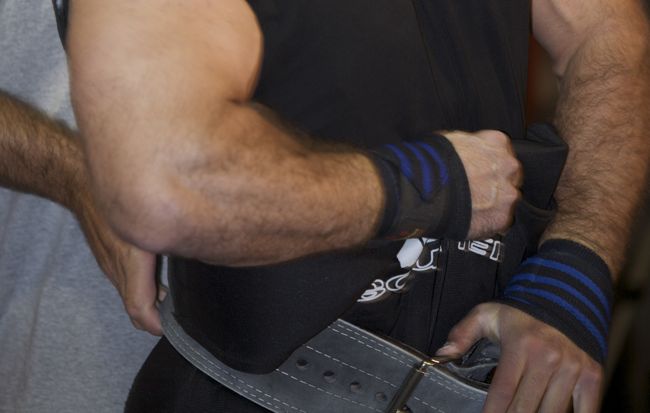
Strength Deficit
The Brown-Bowsher equation, better known as the "BB-strength deficit equation" was originally developed for short-term use for a division-one football program. The program was in the middle of a strength coach coaching change, and the incoming staff had a very limited amount of data on the returning athletes.
Ross Bowsher and myself, Dan Brown of forcebarbell.com were given the task of determining each individual’s strength deficit. In other words, we were asked to evaluate each player to determine if strength or power was the dominant characteristic displayed by the athlete.
At the time, the previous staff had no access to Tendo Units or any other rate of speed/force development equipment. We had only the following data to work with: 1RM bench press, 1RM back squat, 1RM power clean, 40-yard sprint times, and body weight.
With this limited data set, we uncovered a simple way to calculate a strength deficit. To confirm the validity of our data, several experts in the area of strength deficit were consulted and they subsequently confirmed the validity of the equation.
Upon completion of the data analysis, we realized that this would be an extremely useful tool for many coaches on every level. The formula is simple and easy to follow. Below is an explanation of how it works.
First and foremost, once you get your max effort data, make sure you convert either kilograms or pounds to one unit of measurement or the other. In other words, make sure your units of measurement match. Once you have converted your units, follow the equation below.
Max Back Squat/Max Power Clean=Z
(Z) X (BW)/Max Squat = Strength Deficit Ratio
The strength deficit is a number that tells the coach that the athlete is equal parts strength and power, strength dominant, or acceleration dominant.
What is a good score for the BB strength deficit equation?
- .5 or a ratio – a perfectly balanced athlete.
- .7-.75 – an athlete displaying characteristics that are more in line with a speed-strength athlete. An athlete in this range would be on the end of more speed or acceleration dominant. Think back to a force velocity curve overlapped with a power curve.
- .78-.85 – an athlete displaying characteristics that are more in line with a strength-speed athlete. An athlete in this category would be on the end of the curve that is strength dominant.
How to Implement the BB-Equation
Once you have this data, you can plan your training cycle accordingly. As a coach, you can essentially program for three different groups of athletes.
Group 1
This would be your developmental guys. These are your athletes who probably have very little maximal strength and a generally young training age. For these athletes, you basically can’t go wrong training them. Implement any training that involves compound movements and you will make them stronger. You could utilize a basic block program, a basic conjugate program, or even something as simple as a Bill Starr 5 x 5 program.
Group 2
This would be your athletes who need to work on their speed strength. In this case, they have a good amount of maximal strength, they just need to work on converting that strength to power. Again, utilize the programming method you prefer. If you use an Olympic-based program, do more snatches in your training. If you use a powerlifting-based program, implement more box jumps. If you were monitoring bar speed with a Tendo Unit, you would want the speed to be around .9m/s.
Group 3
Finally, this would be your athletes who have a good amount of maximal strength, and decent explosive power, however they need to improve strength speed, or moving a heavy load fast. If you had an Olympic-based program, you would implement higher maximum percentage cleans and jerks. A powerlifting-based program would implement speed pulls at a heavier weight and possibly with chains. If you're monitoring progress with a Tendo Unit, you want the bar speed around .7 to .8m/s.
Final Word
The guidelines above are just that, guidelines. My goal for this article was not to tell you what style of training to implement. I just wanted to share a simple tool with as many coaches and athletes as possible. Hopefully this helps simplify some issues with understanding the strength deficit. If you have questions, I would love to help. Please e-mail me at forcebarbell@gmail.com









